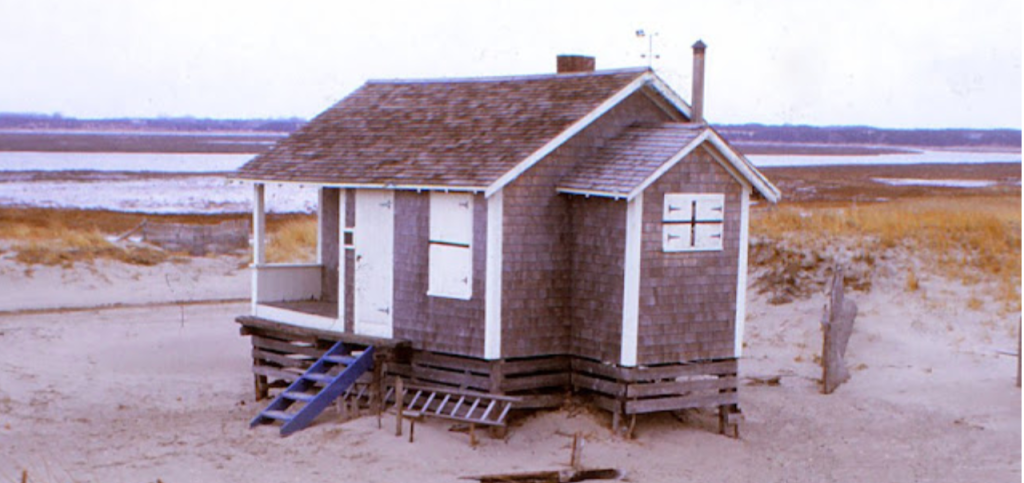The Outermost House, the book written by Henry Beston and originally published in 1928, plays a significant role in The Deadly Samaritan. Mentioned early in the book, the small cottage on the dunes of Cape Cod, Massachusetts, becomes a more significant locale toward the end of the book when McLogan and Laurel visit the National Seashore to sort through some of the clues surrounding the murder of Diane Flatley.
Beston, a naturalist, built and then spent a year living in the cottage, observing the changing seasons, wildlife, and the rhythms of nature. From that house, the easternmost residence in the U.S., Beston had written:
“On its solitary dune, my house faced the four walls of the world.”
McLogan liked that sentence and would think about it as he walked the same dunes that Beston had almost 65 years earlier. He thought about those “four walls” as he walked Nauset Beach and considered it a privilege to have the same view. He regarded Beston’s dunes as his private place, his own “Outermost House.”
The locale helped him twice. In his backstory, and then again in solving the mystery.
The Outermost House emphasizes the wonder of the natural world, the interconnectedness of all living things, and is widely viewed as a classic of nature writing.
Generations of nature writers and conservationists were inspired by it, and it continues to transport readers to the shores of Cape Cod and instill a sense of reverence for the natural world.
The Outermost House is still available for sale. Check it out.


Leave a comment